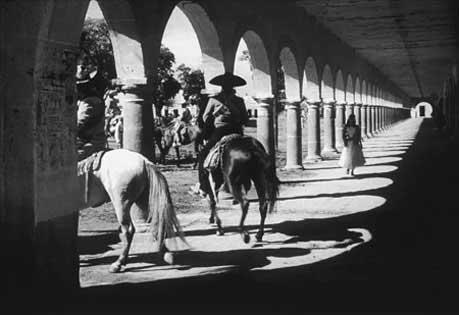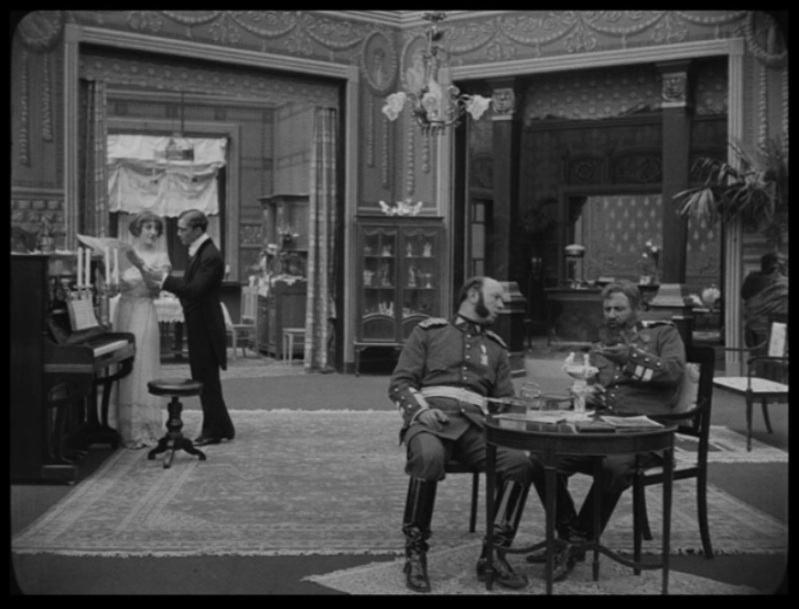
The Dryden Theatre, George Eastman House.
The was the second Festival of Nitrate film prints at the George Eastman House in New York State. Friends who went to the first had tantalised me with comments about the quality of the films on the now out-dated film stock. In particular they had referred to Ingrid Bergman’s tear in a scene from Casablanca, USA 1942. Nitrate films have a particular luminosity, especially noticeable when the lighting is accentuated. Nitrate film is rarely seen now as there are all sorts of safety precautions that have to be in place. The material is highly flammable and can even explode.
Seeing nitrate is an uncommon pleasure. In the UK only the National Film Theatre is equipped and licensed to project to nitrate films: and such screenings are increasingly rare. The George Eastman House in Rochester USA is a famed venue. So the three days of screenings in May was like the site of the Holy Grail for film lovers. About 500 people turned up, from all over the USA, Europe, Asia, Africa, Australia, Europe and Latin America.
This would seem to have been a mammoth project. The assembled prints came from archives in many places. And the talented team at the George Eastman had to check, prepare and ensure that the films were ready for screenings. One particular problem is the rate of shrinkage. It seems that if it goes above 1% of the print it difficult or impossible to screen. The projection equipment includes two Century Model C projectors fitted with xenon lamps.
All the films were screened in the Dryden Theatre. This is well appointed, seating about 500. The sightlines all over the auditorium appear good, though the rear seats are some distance from the screen, making it difficult to fully appreciate the fine detail of films.
The programme commenced on Friday evening with Nitrate Shorts.
Object Lesson US 1941, Anthology Film Archive. This was a ten minute black and white ‘surrealist film ‘ with an environmental concern.
Cent Ans de Chemins de Fer Suisses Switzerland 1946, Cinémathèque suisse. The is an animated celebration of Swiss railways in glorious colour.
Jolly Little Elves USA 1934, Museum of Modern Art. Another animation in two-strip Technicolor. The Elves were altruistic and engaging.
Twenty Years of Academy Awards USA 1948, Academy Film Archive. This was a compilation of Award winning film’s extract, variable quality.
The Art Director US 1947, Academy Film Archive. This was an 8 minute Academy film on the title role. There was a variety of film extracts, an interesting selection.
The Golden State USA 1948, Academy Film Archive. A Technicolor paean to California, with the audience invited to join in “California Here I Come”.

Enamorada between María Félix and Pedro Armendáriz .
Then we moved on to the Festival features. I had seen all of these before so I was able to compare the quality of acetate 35mm and nitrate 35mm. The first feature was a Mexican film, Enamorada from 1946, Universidad Nacional Autónoma de México. The film was directed by Emilio Fernández and filmed by Gabriel Figueroa: the lighting one of the great cinematographers. This was a really good print which showed off to great effect the fine cinematography of Figueroa.
The final film of the evening was Otto Preminger’s Laura 1944, Academy Film Archive. The print screened was the pre-release version but I could not spot the additional footage. The nitrate print did not seem to look very different from the acetate 35mm prints that I have seen before.
Saturday kicked off with the Technicolor musical Annie Get Your Gun, USA 1950, Library of Congress. This was filmed by the veteran Charles Rusher and has really good Technicolor. But I did not think the nitrate print was superior to ordinary 35mm.
The we had the British Brighton Rock , UK 1947, British Film Institute. The film looks really good and makes excellent use of location filming. Harry Waxman’s cinematography is really fine and there are some great sequences in chiaroscuro. The nitrate print showed up these qualities really well and it was a pleasure to watch from start to finish.
Our next feature was Ladri di Biciclette, Italy 1948, George Eastman Museum. It was the US release version, but it did not look that good in a nitrate print. Possibly it was a dupe print, the definition and contrast were both limited.
Opening the evening session we had some more shorts. There was one minute of George Eastman in 1930, not exactly exhilarating. But then we had two animations in Technicolor by Oskar Fischinger., An Optical Poem, USA 1937 and Allegretto, USA 1943: both from the Library of Congress. In colour the animation was beautiful and this was real treat.

The main evening feature was Powell and Pressburger’s The Tales of Hoffman, UK 1951, Library of Congress. This film was produced in that grey era just as nitrate was giving way to acetate. The print we viewed was mainly nitrate, but part of the penultimate reel and the final reel were on acetate. I did notice some difference but I could not have told you exactly where the changeover occurred: it looked great on nitrate.
Saturday morning we kicked off with Road House , USA 1948, UCLA Film and Television Archive. The film has quite an amount of changes from high key to low key lighting and some location work late in the film. Both looked really fine in nitrate.
The afternoon bought another British classic in Technicolor, Blithe Spirit, UK 1945, Museum of Modern Art [from Martin Scorsese]. The Technicolor image looked really fine on nitrate.
The final film was a ‘surprise’, ‘Blind Date with Nitrate’. It was a silent, Ramona USA 1928. I had seen this film before, at the 2015 Giornate del Cinema Muto, so I could compare the acetate 35mm and nitrate. This screening was definitely an improvement. The interplay of light and shadow, the luminosity of certain shots and features, were all a real pleasure to see. The film had an odd history. it was a European release that ended up in Gosfilmofond archives. We also enjoyed a fine accompaniment by Phil Carli, a regular at Il Giornate del Cinema Muto.

Dolores del Rio as Ramona
The George Eastman House has already fixed the dates for 2017, May 5th, 6th, and 7th, The Saturday falls on the same date as the birthdays of Max Ophuls and Orson Welles. Maybe we could have a nitrate print of one or both of the films by the great filmmakers. The one disadvantage to the Eastman house approach is that they do not publish a programme of titles prior to the event. Paulo Cherchi Usai justified this in one of his addresses, remarking [among other points] that the Festival was about nitrate not particular films. But people are travelling from distant parts of the USA and farther afield. Moreover, they may well have seen quite a few of the titles previously on nitrate. So I am happy to have one or more surprises but I think they should reconsider their approach to publishing the programme.
A fuller report will appear in due course in Flickers Journal of the Vintage Film Circle.















